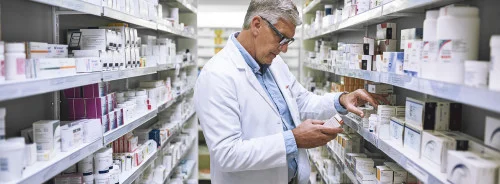HealthManagement, Volume 9, Issue 1 /2007
Author:
Mart Geraerts
Senior Consultant: Indoor Air Quality in Medical Facilities
Economist: Walsberghe nv - Europe
E-mail: [email protected]
It is a known fact that tuberculosis, aspergillus,
chicken pox, measles and MRSA-containing particles float around in the indoor
air of most hospitals. Numerous publications on hospital hygiene confirm this
state of affairs. H5N1 might join them in the near future.
Airborne infection transmission causes severe human, social and financial problems. Moreover, the numbers of these infections are increasing as reported by the WHO on Tuberculosis and the H5N1 pandemic.
But this is not the point. The point is: "Can we do something about it?" The answer is: “Yes, we can clean the indoor air". Is it that simple? Yes it is, but it requires an open mind and commitment from various departments in healthcare organisations.
A Number of Issues have to be Considered First
The hygiene department should look further than the debate on which form of transmission is most important and rather focus on all the parameters, such as contact, droplet or airborne that result in the transmission of infections. By linking contact, droplet and airborne, preventive measures will result in the one supporting the other. Consider the idea that whatever is not in the air, cannot drop and contaminate the furniture or medical devices and, more importantly, cannot be inhaled.
The technical department should look further than the (theoretical) technical details of the HVAC system and have an open mind with respect to new, innovative solutions and options that can support their existing ventilation system, options that contribute to a safer hospital environment.
Management should make a cost-benefit analysis based on all the criteria, facts and figures and consequences, as commercial companies would do. The cost of an infection, in relation to the cost of a preventive measure, should also be considered in view of potential savings in financial, patient outcome and reputation.
But, let us look at some known examples first.
1. It was established that airborne MRSA-concentrations are always present in a patient’s room ( ~ 6 cfu/m2) and that higher concentrations occur during bed-making ( ~ 116 cfu/m2). This means that high concentrations of MRSA ( ~ 100 cfu/m2) would have fallen on surfaces such as medical instruments, furniture and the floor. Consequently, the result of other preventive measures like sterilisation or hand hygiene will be diminished. Additionally, a part of the MRSA particles remains airborne ( ~ 6 cfu/m2) and will be spread by the indoor air to other areas in the hospital.
2. The risk of HCWs being infected with tuberculosis is higher in general departments, such as First Aid, I.C.U. and autopsy (non-isolation), than in equipped departments (isolation rooms).
3. Mobile HEPA Pro Units completely eliminated invasive aspergillosis infections in patients undergoing (allogeinic) bone marrow transplants.
Airborne infection transmission has no limits or boundaries and the majority develops inside the hospital facility.
What are the technical options available to reduce the risk of airborne infection transmission?
The options are:
• replacing all inadequate HVAC-installation; and/or
• installing HVAC-systems with HEPA filters in all the potential risk areas.
These options are fine when building a new facility or when costs are not an issue. However, both are demanding, as they require building activities with all the associated consequences including disturbances both to the department and patients.
A workable and feasible option is to install specifically designed and developed, high efficiency HEPA filter units (preferably mobile units) that filter/clean the indoor air by eliminating airborne infection transmission at the source. (This would include MRSA and/or TB and virtually all other infectious airborne particles.)
What are the considerations when trying to establish which HEPA filter unit should be used? Which questions should be asked? Which device should be chosen? The most important criteria are:
• the effectiveness of the unit;
• whether the unit achieves the level of filtration required; and
• whether the information from the manufacturer is correct.
The only reliable answers come from international healthcare providers faced with the dangers of airborne infection transmission, as airborne infection transmission in hospitals is an international issue. Also, consider proven scientific confirmations published by esteemed scientific organisations such as hygiene institutes in university hospitals, which have worked with and tested a specific mobile HEPA unit for a long period of time, preferably months or even years. Only a unit that has offered significant results (a significant reduction or the total elimination of airborne infection transmission: CFUs) should be deemed reliable.
The technical demands for an efficient (mobile) HEPA unit are:
• double airflow (one airflow to take in contaminated air and one airflow to return cleaned air);
• air intake should be at an effective, horizontal (breathing) level, from 1m and over 360º (air intake at floor level is useless, as people do not breath at this level);
• the air outlet should be over 360º diagonally upwards to create airflow in the room (air outlet at floor level is dangerous, CFUs on the floor are made airborne again);
• HEPA 14 filtration with leak test (no risk can be taken with infectious diseases);
• the casing should be shiny stainless steel (to prevent contamination adhesion);
• no or limited maintenance (the unit has to function around the clock, all year round);
• the electronics have to meet maximum safety standards;
• little or no occupation of floor space (floor space is limited in hospital rooms); and
• key remote control (only hospital staff can control the unit).
The discussion regarding the socially acceptable level of the infection rate is not that relevant as even one infection – which could have been prevented – is one too many. It would make more sense to look at the financial implications of an infection.
• The cost of an MRSA infection is between €10 000 and €36 000.
• Tuberculosis (non-resistant) costs a minimum of €10 000.
• Treatment of invasive Aspergillosis costs around €35 000.
• Preventive medication against invasive Aspergillosis, for all patients at risk, costs around 30/day per patient amounting to around 600/day for a ward.
Bearing these figures in mind, we should ask ourselves how we can guard against potential infection as a result of airborne infectious particles and the crippling associated costs. The answer is simple as the costs to implement an effective (mobile) HEPA concept pales into insignificance when compared with the cost of an outbreak of an airborne infection.
• An efficient mobile HEPA unit that protects healthcare workers, patients and visitors all year round, costs substantially less than €10 000 and is a once-off investment.
• The initial budget estimate, to create an isolation room or patient safe room with aircleaning and pressure difference (positive or negative) is approximately €1 000.
Apart from that, a professional isolation room with negative pressure (for tuberculosis /H5N1) or positive pressure (for immuno-compromised) is installed in less than a day.
Finally, once you have decided to implement an effective and efficient (mobile) HEPA filter device/unit, make sure that the unit has been double checked and its validity confirmed by medical, clinical and laboratory studies, published by esteemed medical organisations.
Only then you can be sure that there is nothing “bad” in the air and breath easily.





